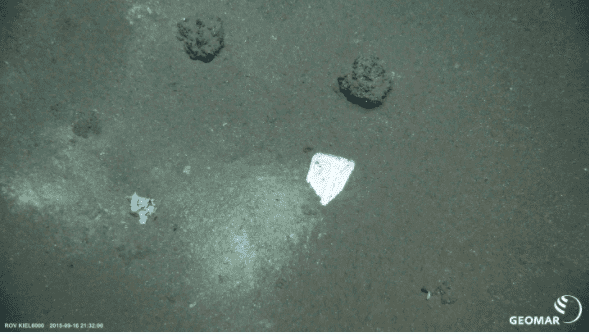Plastic in deep sea shows no traces of degradation, remains unchanged for over 20 years: Study

A plastic bag containing a Coke can, which was part of a special edition produced for the Davis Cup 1988, are among the list of plastic products that have stayed virtually unaltered for several decades at a depth of more than 4,000 meters in the sea. This is according to a long-term study on plastic degradation in which scientists did not find any traces of fragmentation or even degradation in the plastic items recovered. Plastic products are durable and while that is an advantage, if the plastic enters the environment, this advantage turns into a problem, say experts.
Plastic debris can be found even in the most remote regions of the oceans. It can only be estimated how long plastic debris actually remains in the environment, and corresponding long-term experiments are lacking, says the team. This applies particularly to the deep sea that is poorly explored itself. Plastic objects that are found by chance with the help of deep-sea robots or other underwater vehicles are difficult to date, says the research team. To fill in the gaps, scientists from German-based institutes -- GEOMAR Helmholtz Centre for Ocean Research (Kiel), the Max Planck Institute for Marine Microbiology (Bremen), and Zoological Institute, Christian-Albrechts-University (Kiel) -- examined plastic items that were left in the sea for over 20 years.
During the expedition with the German research vessel SONNE in 2015, the team was able to recover several pieces of waste from the seabed of the Eastern Pacific Ocean. From their analysis, the researchers conclude that plastic in the deep sea remains unchanged even after a quarter of a century. The study provides the first scientifically sound indication of the fate of plastic debris in the deep sea, they add.
“We present unique results of plastic items identified to have been introduced into deep-sea sediments at a water depth of 4,150m in the eastern equatorial Pacific Ocean more than two decades ago. The results, including optical, spectroscopic, physical, and microbial analyses, clearly demonstrate that the bulk polymer materials show no apparent sign of physical or chemical degradation. Solely the polymer surface layers showed reduced hydrophobicity, presumably caused by microbial colonization,” says the researchers in their findings published in Scientific Reports. They add, “Our findings suggest that plastic is stable over extended times under deep-sea conditions and that prolonged deposition of polymer items at the seafloor may induce local oxygen depletion at the sediment-water interface.”

A remotely operated deep-sea robot ROV KIEL 6000 observed the waste and recovered it from the seafloor. Among it was a plastic bag containing the Coke can. “The beverage 'Coke' can in the plastic trash bag is a special edition produced in Germany for the 'Davis Cup' in December 1988 and showed an expiry date in 1990,” say experts. Therefore, the plastic trash bag with the can and a refreshment tissue inside was very likely introduced during one of the RV SONNE cruises carried out in 1989, the team adds. “The aluminum can itself would have corroded in the deep sea, if it was not wrapped tightly inside a plastic garbage bag that preserved it. This also indicates that the garbage bag must be of the same age,” says Dr Matthias Haeckel from GEOMAR, project manager on board back then and now co-author of the study in the analysis.
A second recovered item was a curd box from a German manufacturer, with a printed address that had a five-digit postal code. These were not introduced in Germany until 1990. However, the manufacturer was bought by a rival company in 1999, and the brand name disappeared, say researchers. The researchers found that neither the bag nor the curd box showed signs of fragmentation or even degradation. According to the research team, a very interesting finding was that the microbial community on the plastic surfaces differed from the one identified in the surrounding seafloor sediments. “All of the species can be found in the deep-sea sediment, but apparently, larger accumulations of plastics could locally cause a shift in the ratio of the predominant species,” says biochemist Dr Stefan Krause from GEOMAR, lead author of the study. He led the onshore analyses in the home laboratories.
Dr Massimiliano Molari from the Max Planck Institute for Marine Microbiology, who analyzed the microbial community, says that from a microbiological point of view, the results of this study are quite exiting. “The plastic debris drastically changed the environmental conditions. For example, it most likely reduced the flux of oxygen, thereby creating better conditions for bacteria requiring steep redox gradients. Further, the microbial community associated with plastic debris is dominated by so-called chemolithotrophs, which use inorganic substrates to gain energy. Thus, the deposition of plastic items is locally impacting not only the microbial diversity and community structure, but also the microbially mediated functions and their influence on the surrounding environment,” says Dr Molari.